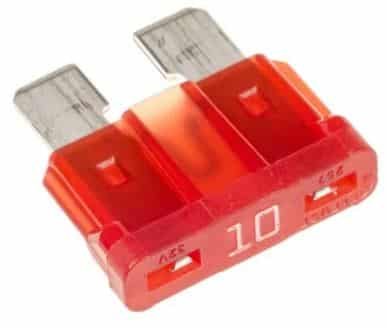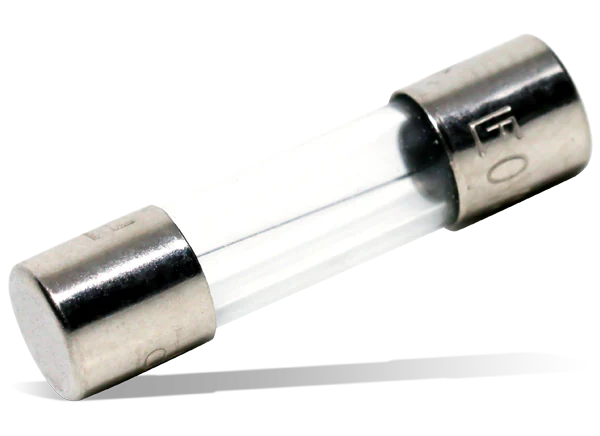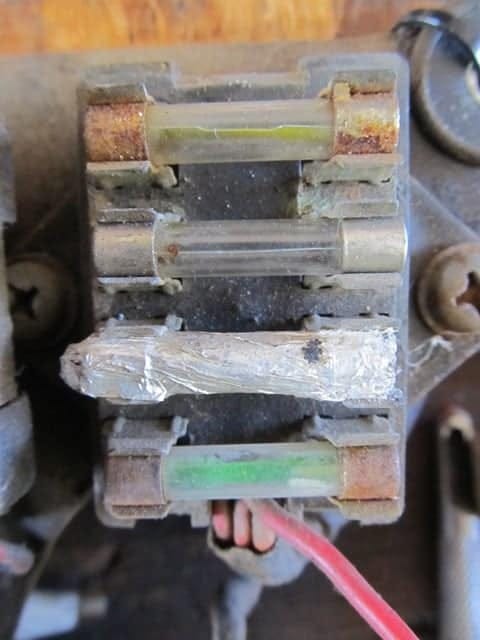Don’t Fix a Blown Fuse With a Bullet!
And no, I’m not making this up…
Dear Readers,
I recently saw this rather disturbing picture of a couple of bullets used to replace blown fuses in a vehicle, and thought I should post it here along with several other DON’Ts. But first, let’s review what a fuse does and why it’s important to the safety of your vehicle.
Fuses (and their close cousins, circuit breakers) are there to protect your wiring from a meltdown, which could result in a fire. And because the wiring in your RV isn’t required to be run in a metallic conduit (like it is in a commercial or industrial building), that fire could start right inside of the flammable walls of your RV, which would be very bad indeed.
So fuses are sized to protect a wire from passing so much current that it overheats and begins to melt the insulation. That’s really their main job, and they do it quite well.
Available in a variety of shapes and sizes, all fuses work pretty much the same way, with a short piece of small-gauge wire that will melt and open up the circuit before the insulation on the wire melts. Thus, the most important parameter about a fuse is its AMP rating, which is the amount of current it can pass without blowing.
The First Rule is this: NEVER replace a fuse with one that has a higher amperage rating.
The reason that a fuse blew in the first place was probably due to an excessive amount of current flowing in the wire. There are too many possibilities as to the cause of that excessive current for this short article, but don’t tempt fate and plug in a higher-amp-rated fuse.
Bad things will likely happen. Just know that every wire gauge has a maximum current that it’s rated for before it can overheat and melt. And once the insulation melts it can make contact with all kinds of things it shouldn’t touch. That’s when short circuits happen!
Second Rule: Fuses come in fast-blow and slow-blow versions which are not interchangeable.
A fast-blow fuse will operate nearly instantaneously (sometimes within one line-cycle) to offer protection for electronic devices. They’re sometimes added in series with circuit breakers on big motors, with the fuses sized to protect the motor winding, and the breakers sized to protect the wires. These look like a single piece of wire which can be as thin as a hair for small amperage ratings.
A slow-blow fuse is typically selected to protect circuits that have high inrush currents, such as motors and high current power supplies that have a big “bump” of current on startup. This type of fuse will have some sort of spring-loaded contact sitting in a puddle of solidified solder, which will turn molten with enough temp and open up. Or they’ll have a winding of wire around some sort of ceramic core to provide a little heat sink for a few seconds of 200% overload, allowing the motor or power supply to properly start up without a nuisance trip.
Third Rule: NEVER replace a fuse with a bolt, aluminum foil or even a .22-caliber bullet.
That’s right, people do strange things, and while I’ve seen a few screwdriver blades stuck into large fuse holders, I’ve NEVER seen a bullet used as a fuse … until now. Yikes!
So go get a box of appropriate replacement fuses for your RV or tow vehicle, and don’t let me see you wrapping foil around a dead fuse, or sticking a bolt (or bullet) in its place.
Let’s play safe out there…. Mike











No bullet needed, just wrap the old blown fuse with tin foil. WaaLaa! Just kidding, of course.
Mike, you reminded me of this story.... apocryphal, but hilarious.
Two local men were seriously injured when their pickup truck left the road and struck a tree near Cotton Patch on state Highway 38 early Monday morning. Woodruff County Deputy Dovey Snyder reported the accident shortly after midnight Monday.
Thurston Poole, 33, of Des Arc, and Billy Ray Wallis, 38, of Little Rock, are listed in serious condition at Baptist Medical Center.
The accident occurred as the two men were returning to Des Arc after a frog-gigging trip. On an overcast Sunday night, Poole's pickup truck's headlights malfunctioned. The two men concluded that the headlight fuse on the older model truck had burned out. As a replacement fuse was not available, Wallis noticed that the .22 caliber bullet from his pistol fit perfectly into the fuse box next to the steering wheel column. Upon inserting the bullet, the headlights again began to operate properly and the two men proceeded on eastbound toward the White River Bridge.
After traveling approximately 20 miles and just before crossing the river, the bullet apparently overheated, discharged and struck Poole in the right testicle. The vehicle swerved sharply to the right, exiting the pavement and striking a tree. Poole suffered only minor cuts and abrasions from the accident but will require surgery to repair the other wound. Wallis sustained a broken clavicle and was treated and released.
"Thank God we weren't on that bridge when Thurston shot his nuts off or we might have been dead," stated Wallis.
"I've been a trooper for 10 years in this part of the world, but this is a first for me. I can't believe that those two would admit how the accident happened," said Snyder.
Upon being notified of the wreck, Lavinia, Poole's wife, asked how many frogs the boys had caught, and did anyone get them from the truck.